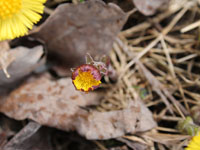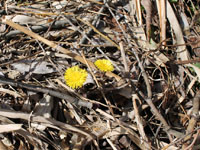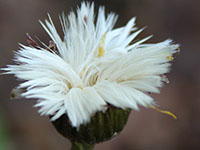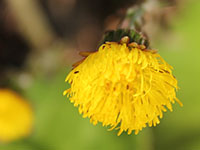![]()
Coltsfoot is a plant in the aster family that is widespread across Europe, Asia, and North Africa, from Svalbard to Morocco to China and the Russian Far East. It is also a common plant in North America and South America where it has been introduced, most likely by settlers as a medicinal item. The plant is often found in waste and disturbed places and along roadsides and paths. In some areas it is considered an invasive species. Coltsfoot has traditionally had medicinal uses. However, the discovery of toxic pyrrolizidine alkaloids in the plant has resulted in liver health concerns. The name "tussilago" is derived from the Latin tussis, meaning cough, and ago, meaning to cast or to act on. Tussilago farfara is the only accepted species in its genus, although more than two dozen other species have at one time or another been considered part of this group. Most of them have now been regarded as members of other genera.
![]()
There are currently no commerical uses for coltsfoot. However; due to the nature of the root system of coltsfoot, the plant could hypothetically be used to stabalize soil along slopes.
![]() Within the realm of rational and holistic medicine, Coltsfoot has been used in traditional herbal medicine and has been consumed as a food product with some confectionery products, such as Coltsfoot Rock. Tussilago farfara leaves have been used in traditional Austrian medicine internally (as tea or syrup) or externally (directly applied) for treatment of disorders of the respiratory tract, skin, viral infections, flu, colds, fever, rheumatism and gout. Other uses of coltsfoot included the soft down on the underside of the leaves being used as a stuffing material. When wrapped in a rag, dipped in saltpeter and dried in the sun coltsfoot leave have made an excellent tinder.
Within the realm of rational and holistic medicine, Coltsfoot has been used in traditional herbal medicine and has been consumed as a food product with some confectionery products, such as Coltsfoot Rock. Tussilago farfara leaves have been used in traditional Austrian medicine internally (as tea or syrup) or externally (directly applied) for treatment of disorders of the respiratory tract, skin, viral infections, flu, colds, fever, rheumatism and gout. Other uses of coltsfoot included the soft down on the underside of the leaves being used as a stuffing material. When wrapped in a rag, dipped in saltpeter and dried in the sun coltsfoot leave have made an excellent tinder.
Please note that MIROFOSS does not suggest in any way that plants should be used in place of proper medical and psychological care. This information is provided here as a reference only.
![]()
The flower buds and young flowers of coltsfoot were traditionally eaten raw or cooked with a slight anise-like flavour. The leaves have a bitter taste unless they are washed after being boiled. An aromatic tea is made from the fresh or dried leaves and flowers. The dried and burnt leaves were also historically used as a salt substitute.
Please note that MIROFOSS can not take any responsibility for any adverse effects from the consumption of plant species which are found in the wild. This information is provided here as a reference only.
![]()
Coltsfoot is widespread across Europe, Asia, and North Africa, from Svalbard to Morocco to China and the Russian Far East. It is also a common plant in North America and South America where it has been introduced. Coltsfoot grows in damp habitats, frequently on alkaline clays, in hedgebanks, roadsides, waste places, often as a pioneer, and on dunes and shingle in coastal zones.
| Soil Conditions | |
| Soil Moisture | |
| Sunlight | |
| Notes: |
![]()
Coltsfoot is a perennial herbaceous plant that spreads by seeds and rhizomes. Coltsfoot is often found in colonies of dozens of plants. The flowers, which superficially resemble dandelions, appear in early spring before dandelions appear. The leaves, which resemble a colt's foot in cross section, do not appear usually until after the seeds are set. Thus, the flowers appear on stems with no apparent leaves, and the later appearing leaves then wither and die during the season without seeming to set flowers. The plant is typically 8cm to 45cm in height. The leaves have angular teeth on their margins. Suitable for: light (sandy), medium (loamy) and heavy (clay) soils and can grow in heavy clay soil. Suitable pH: acid, neutral and basic (alkaline) soils and can grow in very alkaline soils.
![]()
| Plant Height | 8cm to 45cm | 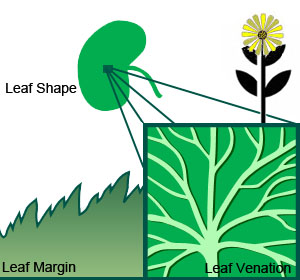 |
| Habitat | Fields, Roadsides, Waste places | |
| Leaves | Reniform, basal, leaves | |
| Leaf Margin | Double-serrate | |
| Leaf Venation | Palmate | |
| Stems | Scaley Stems | |
| Flowering Season | February to June | |
| Flower Type | Small to Medium sized ray flowers | |
| Flower Colour | Yellow | |
| Pollination | Bees, Flies, Self Fertile | |
| Flower Gender | Flowers are hermaphrodite and the plants are self-fertile | |
| Fruit | Small Seeds | |
| USDA Zone | 4A (-31.7°C to -34.4°C) cold weather limit |
![]()
The following health hazards should be noted when handling or choosing a location to plant coltsfoot:
 |
BIOHAZARD The plant contains traces of liver-affecting pyrrolizidine alkaloids and is potentially toxic in large doses. |
![]()
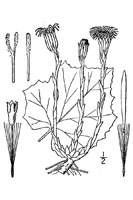 |
-Click here- or on the thumbnail image to see an artist rendering, from The United States Department of Agriculture, of coltsfoot. (This image will open in a new browser tab) |
![]()
 |
-Click here- or on the thumbnail image to see a magnified view, from The United States Department of Agriculture, of the seeds created by coltsfoot for propagation. (This image will open in a new browser tab) |
![]()
Coltsfoot can be referenced in certain current and historical texts under the following eight names:
Coltsfoot can be translated into the following select languages:
| Arabic | حشيشة السعال | Bulgarian | подбел | Chinese (Sim) | 款冬 |
| Croatian | konjsko kopito | Czech | podběl | Danish | Følfod |
| Dutch | klein hoefblad | Esperanto | Estonian | paiseleht | |
| Finnish | leskenlehti | French | tussilage | German | Huflattich |
| Greek | Hebrew | שיעול | Hungarian | martilapu | |
| Italian | Japanese | フキタンポポ | Korean | 머위 | |
| Low Saxon | Lithuanian | Ankstyvasis šalpusnis | Norwegian | Hestehov | |
| Persian | Polish | podbiał | Portuguese | tussilagem | |
| Romanian | podbal | Russian | мать-и-мачеха | Slovak | podbeľ |
| Spanish | uña de caballo | Swedish | hästhov | Tagalog | koltsput |
| Turkish | öksürükotu | Ukrainian | мати й мачуха | Vietnamese | cây khoản đông |

![]()
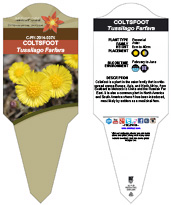 |
The MIROFOSS database offers free printable garden tags for personal and non-profit use. These tags can be used to properly identify plant samples in a garden. Click on the tags shown on the the screen or -click here- to download a full size jpeg image for a coltsfoot identification tag; which can be printed on paper or used with a plastic laser printer. |
 |
What's this? What can I do with it? |
![]()
| Description | USDA-NRCS PLANTS Database / Britton, N.L., and A. Brown. 1913. An illustrated flora of the northern United States, Canada and the British Possessions. 3 vols. Charles Scribner's Sons, New York. Vol. 1: 70. |
| Description | Kartesz, J.T. 1994. A synonymized checklist of the vascular flora of the United States, Canada, and Greenland. 2nd edition. 2 vols. Timber Press, Portland, OR |
| Folklore | Wawrosh C.,"In Vitro Cultivation of Medicinal Plants" cited in Yaniv Z. and Bachrach U., Eds "Handbook of Medicinal Plants", The Hawthorne Medical Press NY Lond. 2005 |
| Biology | Dickinson, T.; Metsger, D.; Bull, J.; & Dickinson, R. (2004) ROM Field Guide to Wildflowers of Ontario. Toronto:Royal Ontario Museum, |
| Image Rendering | USDA-NRCS PLANTS Database / USDA NRCS. Wetland flora: Field office illustrated guide to plant species. USDA Natural Resources Conservation Service. |
| Environment | National Audubon Society. Field Guide To Wildflowers (Eastern Region): Alfred A. Knopf. ISBN 0-375-40232-2 |
| Physical Identification | National Audubon Society. Field Guide To Wildflowers (Eastern Region): Alfred A. Knopf. ISBN 0-375-40232-2 |
| May 14, 2015 | The last time this page was updated |
| ©2025 MIROFOSS™ Foundation | |
 |
|



